Solar on Your Boat, How to Maximize Solar Harvest
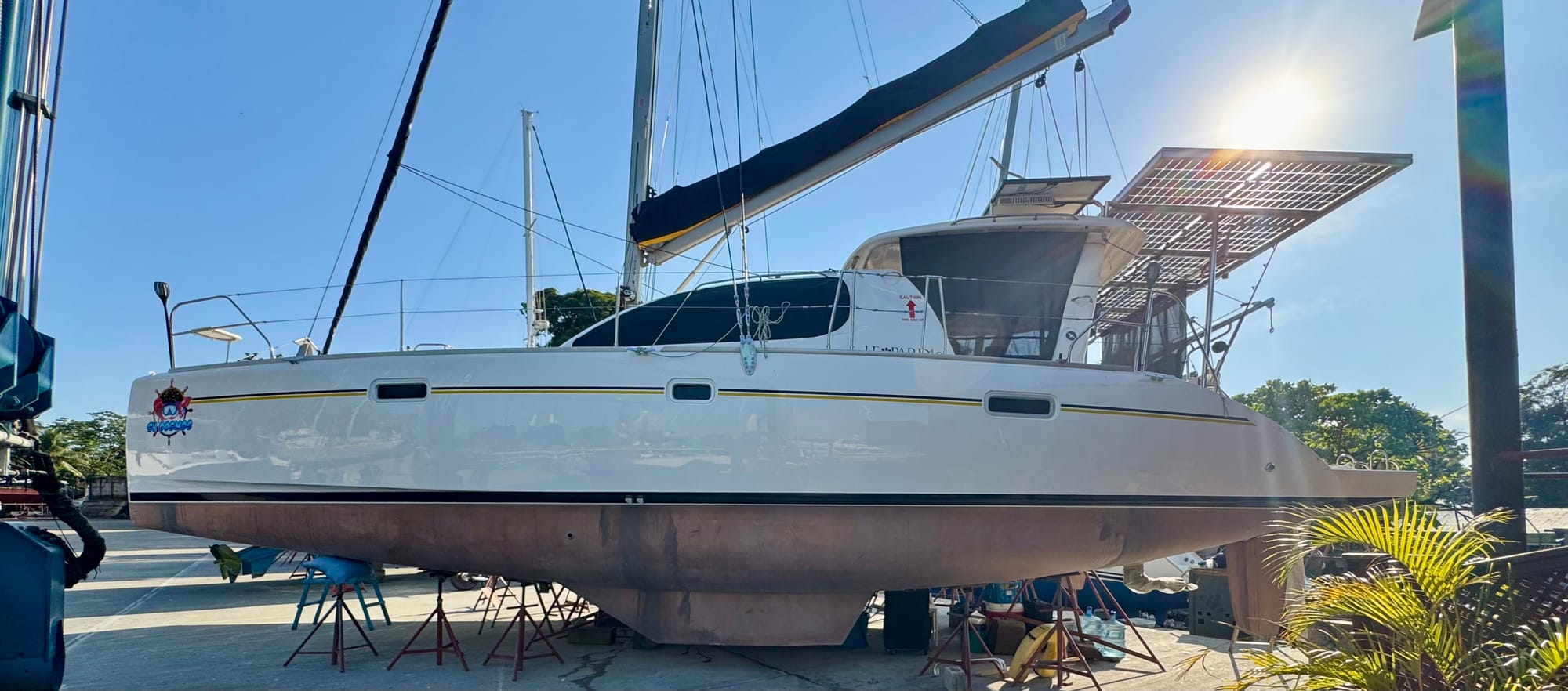
In this article, we will explore how to optimize your boat's solar installation for the best real world performance.
Why Boat Solar Is Different From House Solar
Solar panels on land benefit from fixed mounting angles, consistent sunlight, and open spaces. On a boat, you are working with:
- Limited mounting space
- Constant motion and shifting panel angles
- Partial shading from rigging, hardware, and structures
- Salt, ultraviolet exposure, and mechanical vibration
- Higher temperatures with limited airflow
- Incorrect orientation
Because of these challenges, solar performance on a sailboat rarely matches lab-rated specifications. You need to maximize efficiency at every stage of your setup.
Prioritize Quality Over Quantity
With limited deck or arch space, it is crucial to use high performance panels. Rather than focusing on how many panels you can fit, concentrate on how much usable energy each panel can produce.
Use High Quality Rigid Panels
Choose rigid monocrystalline panels rated at 300 watts or more. These panels offer high efficiency and have enough output voltage to allow for the one MPPT per panel setup.
Avoid Flexible Panels
Flexible and semi-flexible panels often appear attractive, but they rarely deliver on their promises in a marine environment. They tend to degrade faster, overheat more easily, and underperform over time. Although new versions frequently claim to solve these problems, field experience suggests otherwise.
Consider Bifacial Panels on a Solar Arch
If your panels are mounted on an arch or elevated structure, bifacial panels can provide an advantage. These panels collect light from both sides, gaining up to twenty percent more energy through reflection from the water or deck. The airflow underneath also improves cooling, which helps sustain performance on hot days.

Key Specifications to Watch
Not all solar panels are equal. When choosing the best panels for your boat, focus on the following specifications:
- Power Output (Watts Peak)
This is the maximum rated output under ideal test conditions. Aim for panels that produce at least 300 watts, larger is even better.
- Efficiency Percentage
Efficiency measures how much solar energy is converted into usable electricity. Because boat space is limited, buy only panels with at least 20% efficiency. More is better.
- Temperature Coefficient
Solar panels become less efficient as they get hotter. The temperature coefficient tells you how much performance is lost per degree Celsius above standard test conditions. A smaller or less negative number is better. Look for a value around -0.30% per degree Celsius or better.
- Cell Type
The type of cell inside the panel affects its efficiency and durability. For marine applications:
- N-type monocrystalline (including TOPCon, HJT, and IBC) offers the best performance and longevity
- P-type monocrystalline (such as PERC) is reliable and widely used
- Polycrystalline is less efficient and not well suited for space constrained marine installs
For best results, buy N-type half cut cells, which handle shading better and perform more consistently in real world conditions.
- Warranty and Longevity
Most solar panel warranties are technically void if installed on a boat, but they are still useful indicators of quality. A 20 to 25 year warranty from a reputable brand suggests that the panel is well built and will degrade slowly over time. Stick with trusted manufacturers that have a history of performance. I currently recommend LG, Longi, Canadian Solar, JA Solar, REC Group and QCells.
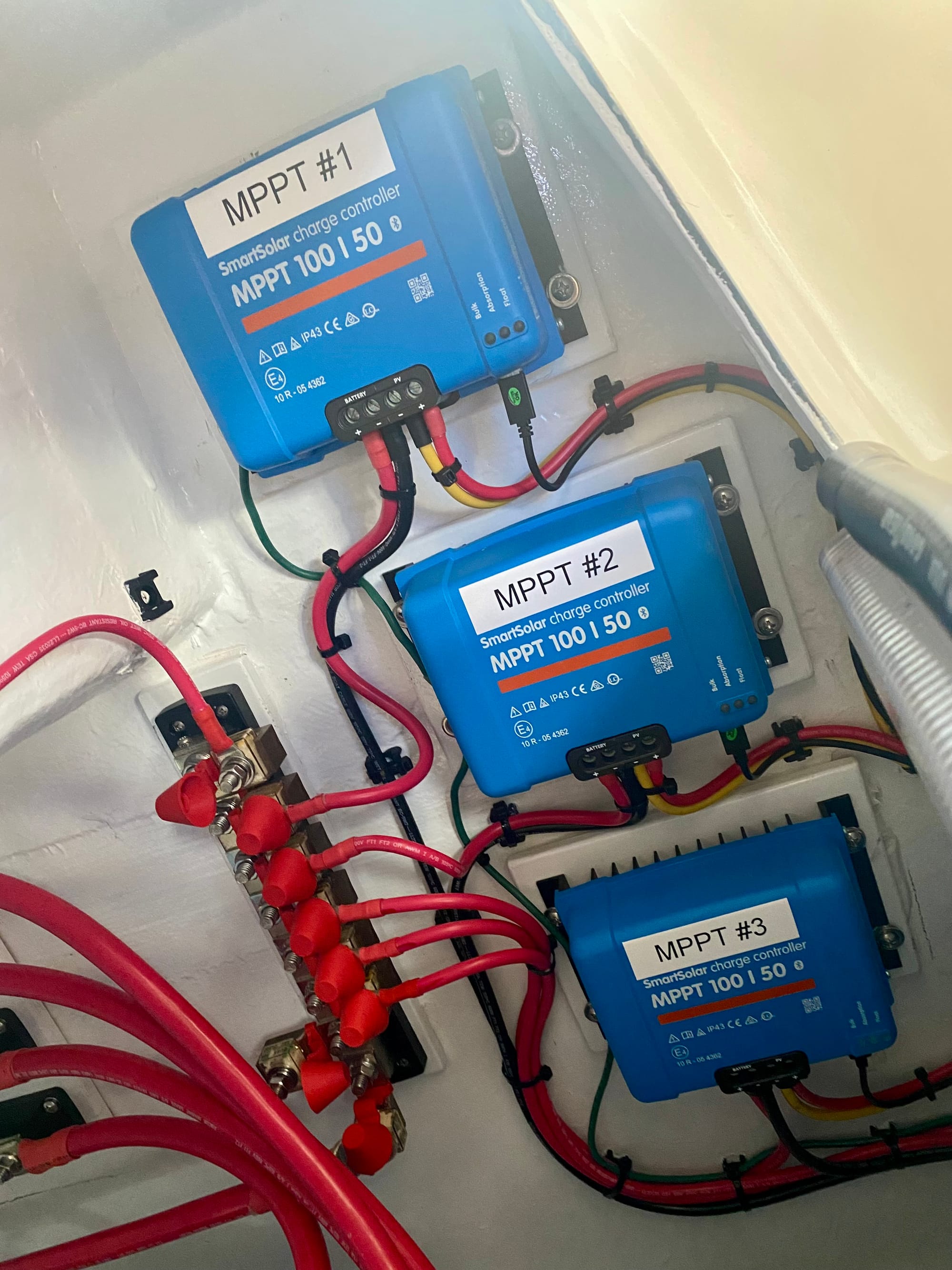
Best Practices for Maximum Solar Output
To get the most from your installation, apply the following tips:
- Use One MPPT Charge Controller Per Large Panel
MPPT (Maximum Power Point Tracking) controllers are far more efficient than older PWM types, especially in changing or partially shaded light conditions. Using one MPPT per large panel ensures each can operate at its full potential. Brands like Victron offer high quality MPPT controllers. Make sure the unit you select will not limit your panel’s output.
Install MPPT controllers close to the house battery bank. It is best to have the higher voltage wiring run from panel to controller, and then short, thick wiring from controller to battery.
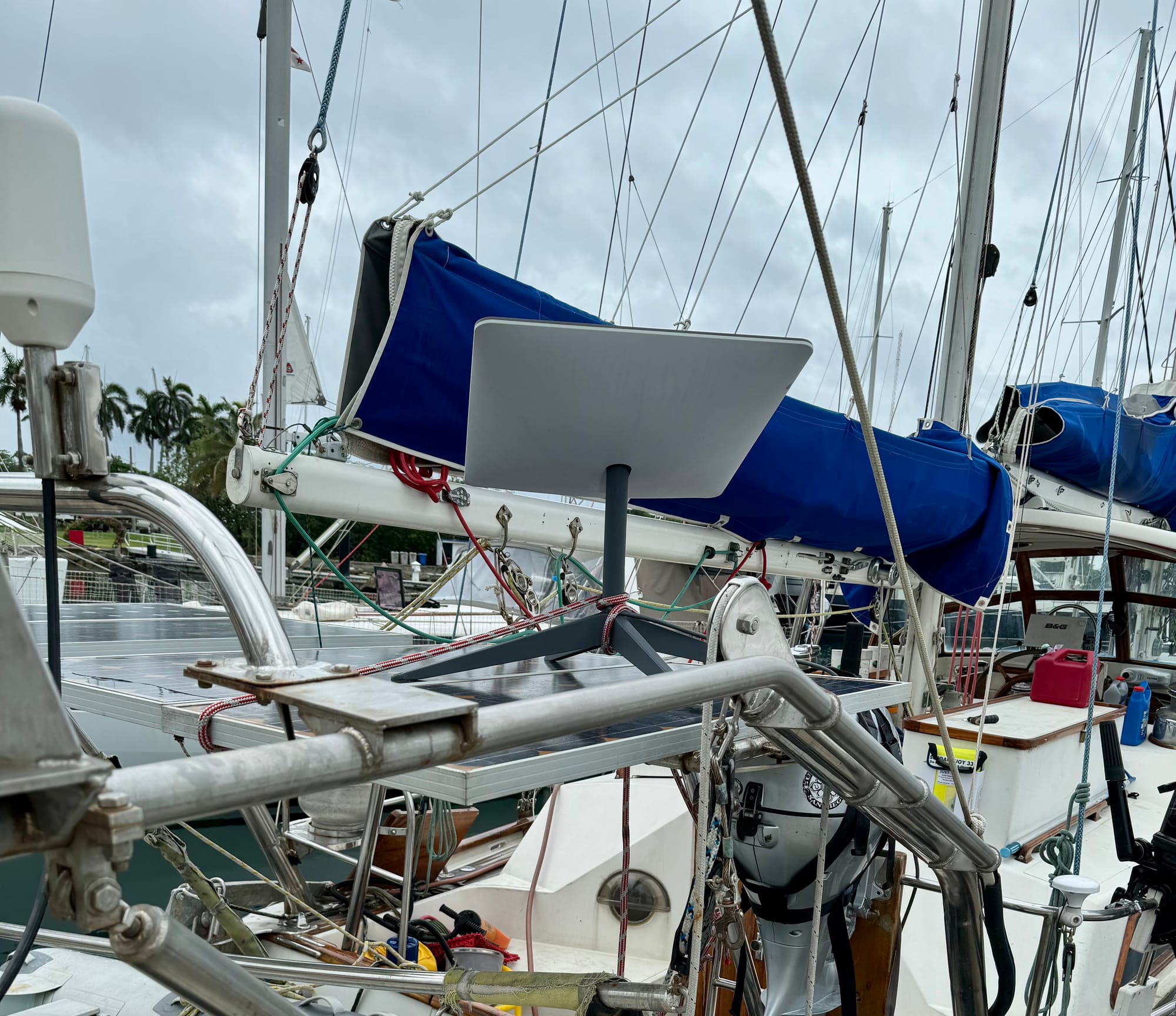
- Avoid Shading
Even a small amount of shadow from rigging, booms, or radar can significantly reduce panel output. Plan your layout to minimize shading.
- Clean Panels Regularly
Dirt, salt, and bird droppings will reduce performance. Rinse with fresh water and gently wipe the surface with a soft cloth to keep output high. We also angle our panels approximately 5 degrees to allow for natural drainage.
- Use Proper Wiring
Undersized or poorly installed wiring causes voltage drop, which reduces the energy delivered to your batteries. Use marine grade wire and calculate the correct gauge based on distance and current. Aim for a voltage drop of no more than one percent.
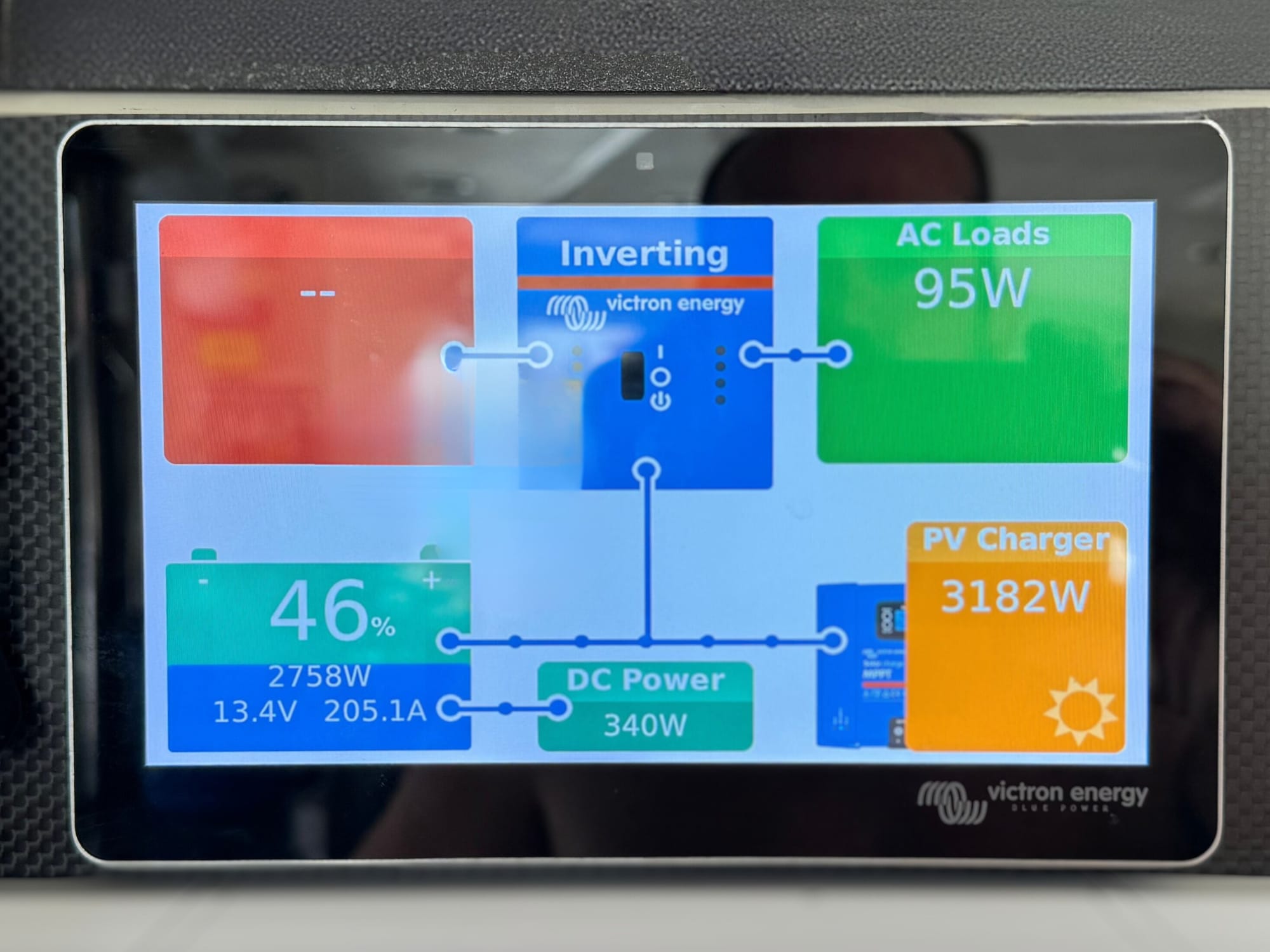
Final Thoughts
A well designed solar setup lets you sail longer, stay anchored more comfortably, and reduce your reliance on noisy engines and fuel. It requires thoughtful planning and quality parts, but the reward is long term energy independence and greater freedom at sea.
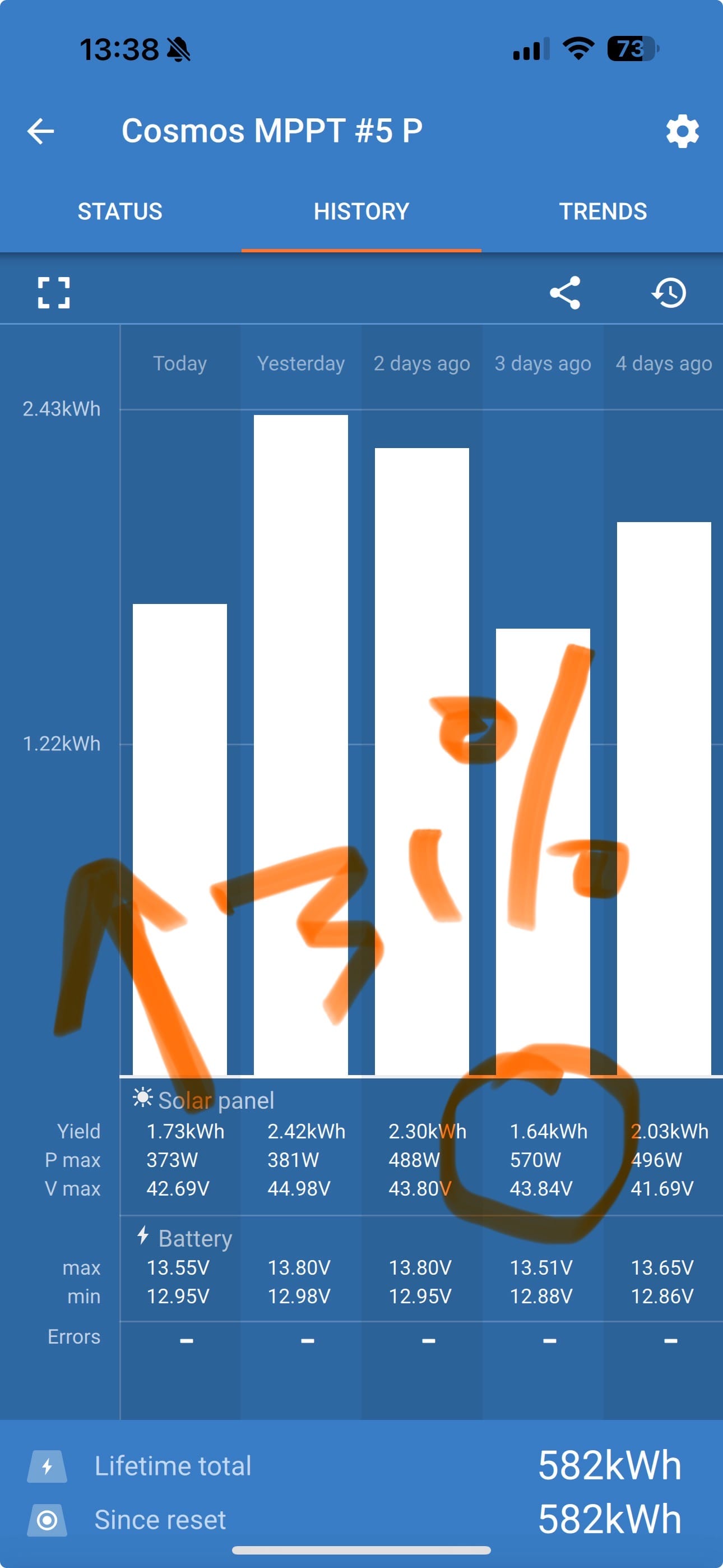
With a properly installed and specified system, we have seen real world outputs exceed panel ratings by twenty to thirty percent under ideal atmospheric conditions. That said, what truly matters is not a single peak number, but the total daily energy harvested.
Choose the right panels, install them smartly, and keep them clean. The sun will take care of the rest.
Here are the parts we use on SV Cosmos and we highly recommend:
Victron MPPTs Blue Sea MRBF Fuse Holders
MRBF Fuses Ancor Marine Wire Victron Cerbo GX
Cerbo GX 7" Display Blue Sea Bus Bars
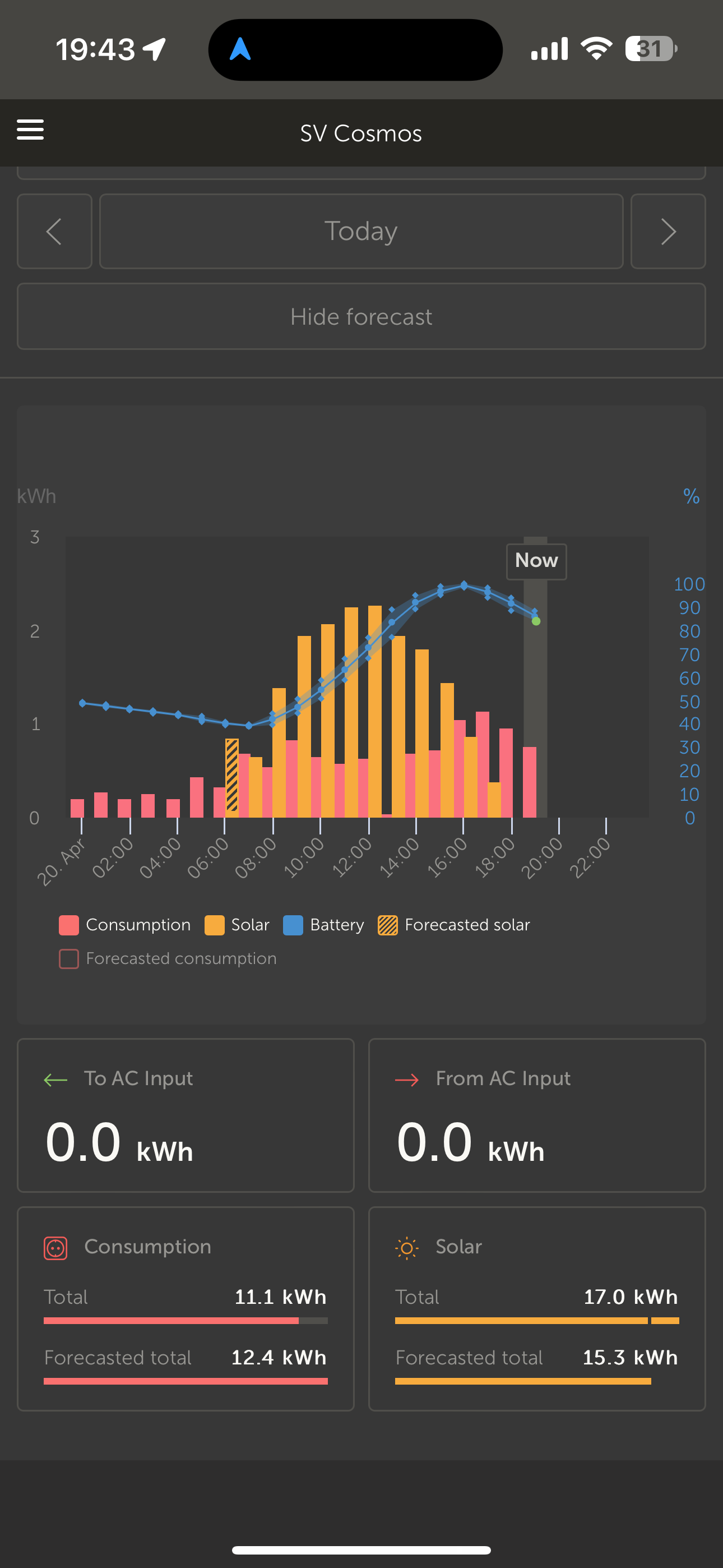
👍 Stay connected and join the fun on Facebook! Squid and Jelly's Great Adventure
📸 Follow our island adventures on Instagram! → squidandjellysgreatadventure
We hope we brought a little extra sunshine to your boat project—whether through our knowledge, helpful tips, or just our irresistible charm! If you'd like to show your appreciation, a small tip could treat a local pup or kitty to a snack (Su has a soft spot for feeding the local strays 🐾), and a little more might just fund a well-earned sundowner (cheers to you! 🍹).
A Click That Helps! 🛠️⚓
If you find our recommendations helpful and decide to shop using our affiliate links, we’ll get a little something in return - at no extra cost to you! Every click helps support our effort to help you by providing free articles and tutorials Thanks for being awesome! 💙
Escape to Paradise at Treasure By The Sea Bonaire! 🏝️🐠
Discover the perfect blend of luxury and adventure at our boutique resort, offering a beautifully designed studio, a cozy one-bedroom house, and a spacious two-bedroom house—all just steps from the tranquil Caribbean Sea. Snorkel 🤿 or dive 🫧 right from our shore and explore a vibrant house reef teeming with marine life 🦐🐠. Take a scenic 5-10 minute stroll along the oceanfront boulevard to downtown Kralendijk, where you can enjoy shopping 🛍️ and dining 🍽️. Our resort offers everything you need for a perfect stay, including private parking 🛻, a rinse tank and secure outdoor storage lockers for your gear, an outdoor kitchen and BBQ grill 🔥, plus a refreshing outdoor shower 🚿 and clothesline for added convenience. Book your stay today at www.treasurebytheseabonaire.com and take advantage of our special offers - use discount code SAJGA10 to save 10% off your stay. We can’t wait to welcome you and make you part of our growing family of repeat guests! 😊🇧🇶
👍 Follow us on Facebook! Treasure By The Sea Bonaire
📸 Follow us on Instagram! TreasureByTheSeaBonaire






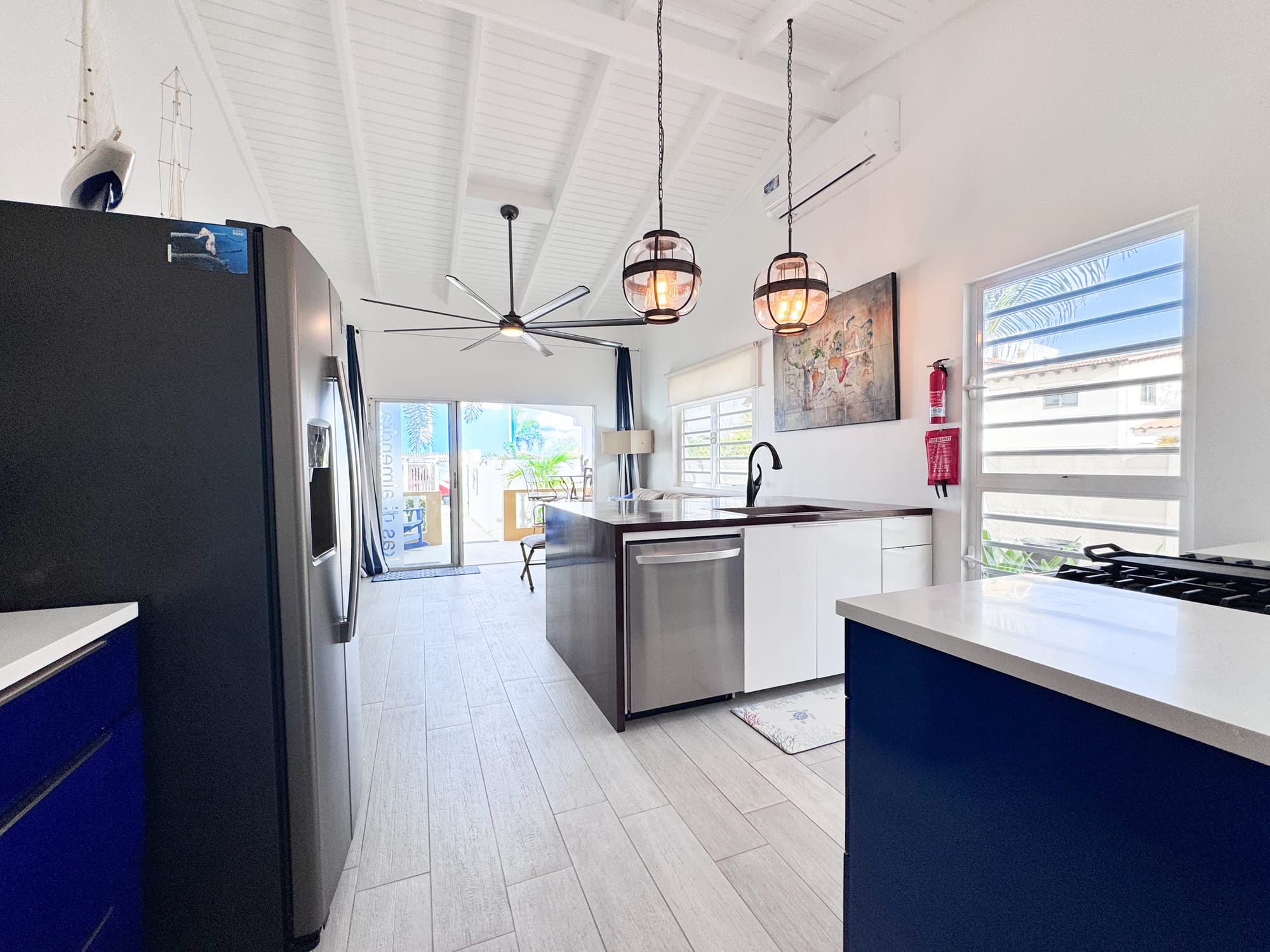
Stay. Snorkel. Dive. Explore. Relax. Let Treasure By The Sea Bonaire be the highlight of your Caribbean escape. 🐠


